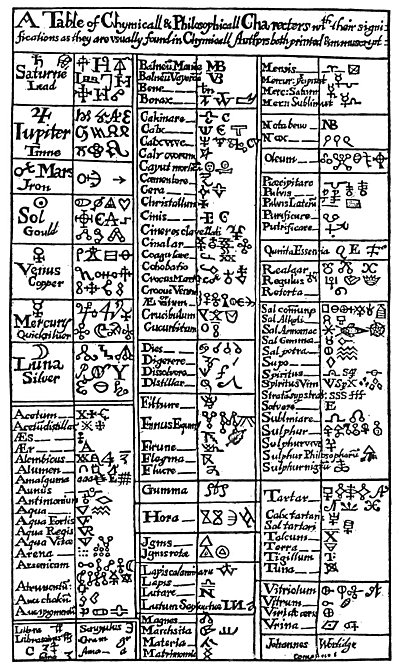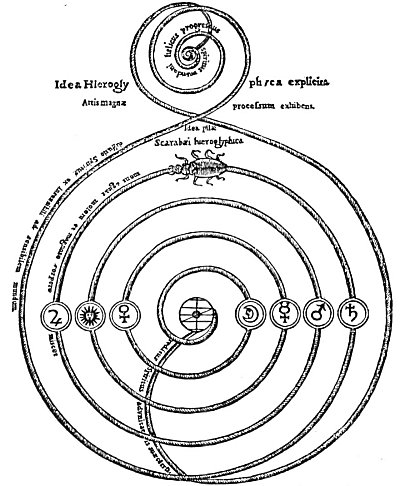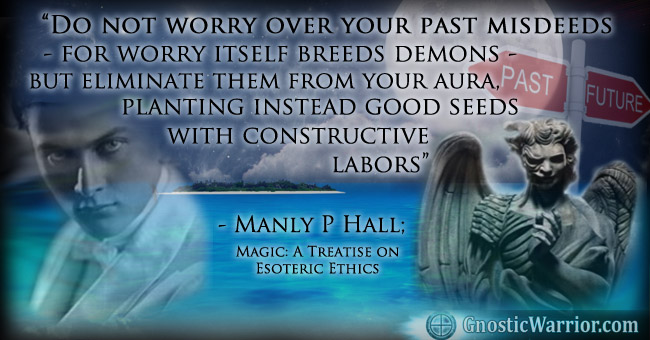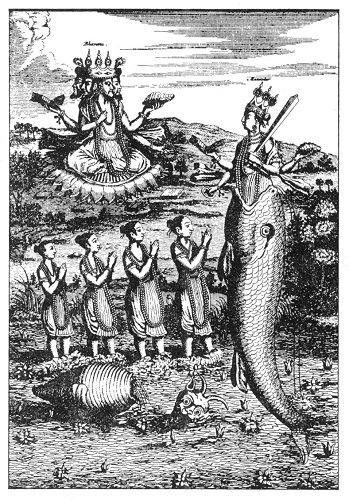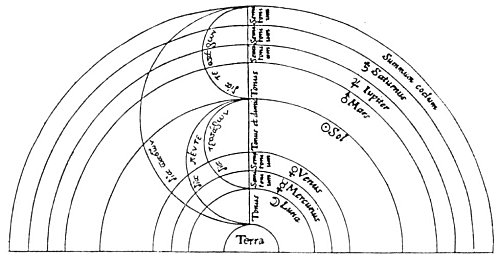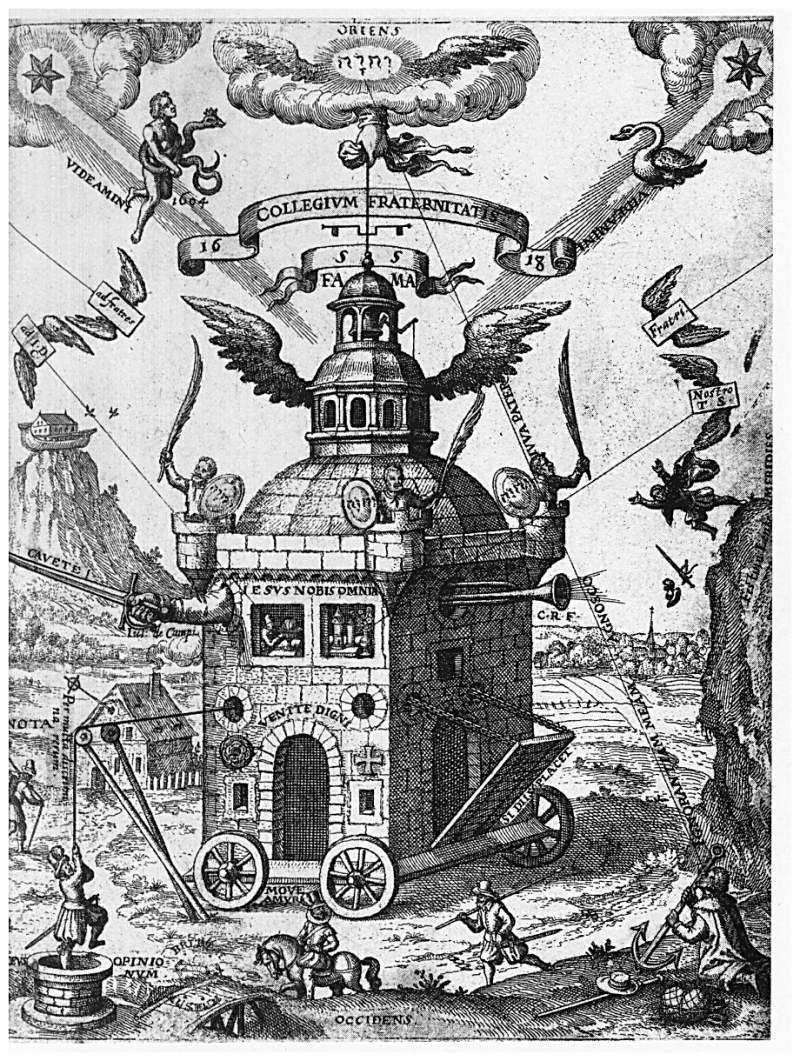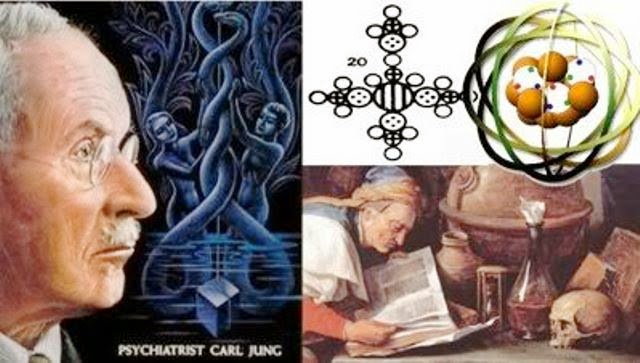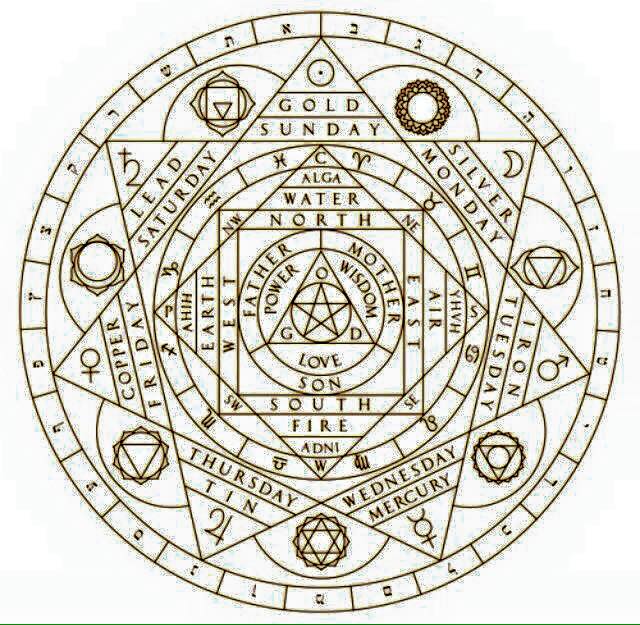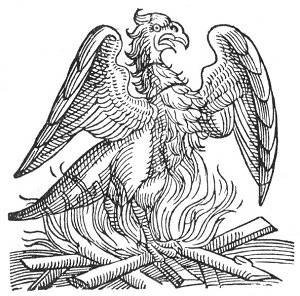The alternative renderings of 3 and 4 are:
| WORLD OF | Father | Son | Mother |
| 3. Elements | Fire | Air | Water |
| 4. Chemicals | Sulphur | Mercury | Salt |
Paracelsus made a different arrangement, somewhat Aristotelian, in which the three phases of the Triune God are omitted, combining only the elements of the second, third, and fourth worlds:
| WORLD OF | Father | Son | Mother |
| 2. Man | Spirit | Soul | Body |
| 3. Elements | Air | Water | Earth |
| 4. Chemicals | Sulphur | Mercury | Salt |
The main point, however, is proved: the alchemical philosophers used the symbols of salt, sulphur, and mercury to represent not only chemicals but the spiritual and invisible principles of God, man, and the universe. The three substances (salt, sulphur, and mercury) existing in four worlds, as shown in the table, sum up to the sacred number 12. As these 12 are the foundations of the Great Work, they are called in Revelation the twelve foundation stones of the sacred city. In line with the same idea Pythagoras asserted that the dodecahedron, or twelve-faced symmetrical geometric solid, was the foundation of the universe. May there not be a relation also between this mysterious 3 times 4 and the four parties of three which in the legend of the third degree of Freemasonry go forth to the four angles of the cherubim, the composite creature of four parts?
A TABLE OF MEDIÆVAL ALCHEMICAL SYMBOLS.
From Valentine’s The Last Will and Testament. Hermetists used the curious symbols shown in this rare table to represent various chemical elements and alchemical processes. The full meaning of these strange characters has never been revealed, the characters concealing effectually within their own forms the occult secrets regarding the spiritual nature of the metals and elements which they represent.
In their allegories the alchemists also wed human, animal, and plant emblems; sometimes weird composite figures, such as the dragon, the winged serpent, the unicorn, and the phœnix. In almost every case they symbolized gold as a king with a crown on his head and often with a scepter in his hand. Sometimes they depicted him with the ace of the solar disc surrounded by rays. Silver was personified as a woman who they called the queen. She wore no crown but often stood upon a lunar crescent: much after the fashion of the Madonna. Mercury was typified as a youth with wings, often with two heads, carrying serpents or sometimes the caduceus. Lead they symbolized by an old man with a scythe in his hand; iron by a soldier dressed in armor. To aqua fortis was given the curious name “the ostrich’s stomach,” and to the attainment of the “Great Work” they assigned the symbol of the phœnix sitting upon a nest of fire. The union of elements they symbolized by a marriage, the Process of putrefaction by a skull, antimony by a dragon.
p. 156
The following table shows the angles to which the parties of three (salt, sulphur, and mercury) go in search of CHiram:
| The Four “Corners” of Creation | East | South | West | North |
| The Fixed Signs of the Zodiac | Aquarius | Leo | Scorpio | Taurus |
| The Parts of the Cherubim | Man | Lion | Eagle | Bull |
| The Four Seasons | Spring | Summer | Autumn | Winter |
| The Ages of Man | Childhood | Youth | Maturity | Age |
| The Stages of Existence | Birth | Growth | Maturity | Decay |
| The Parts of Man’s Constitution | Spirit | Soul | Mind | Body |
| The Four Elements | Air | Fire | Water | Earth |

Moe is the founder of GnosticWarrior.com. He is a father, husband, author, martial arts black belt, and an expert in Gnosticism, the occult, and esotericism.

